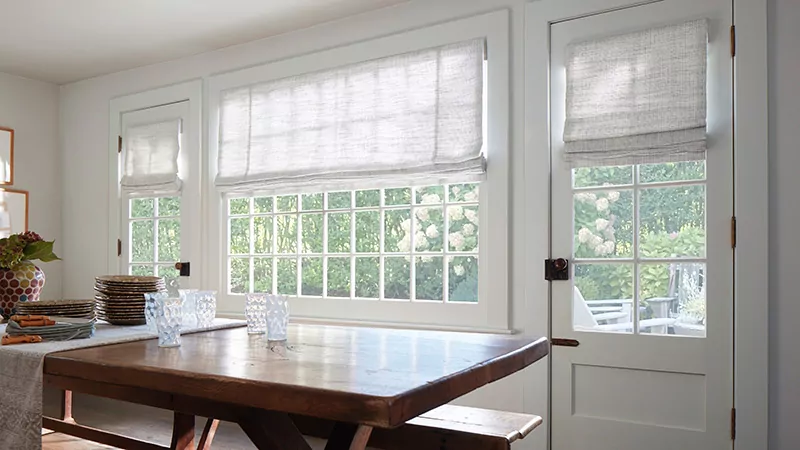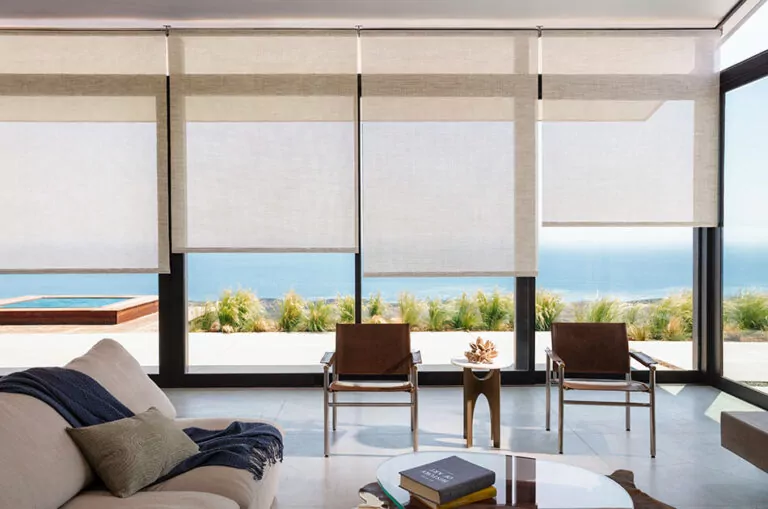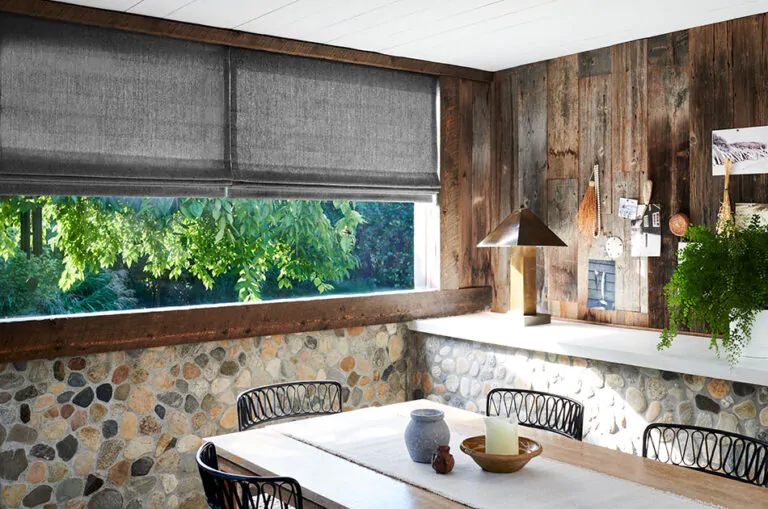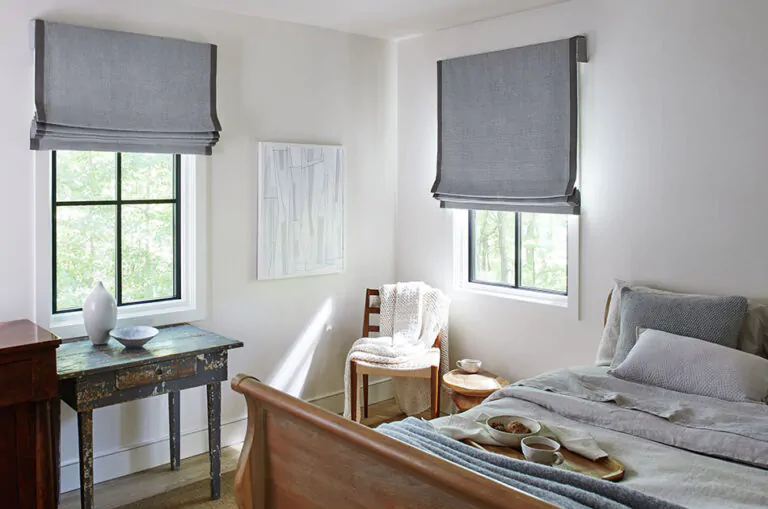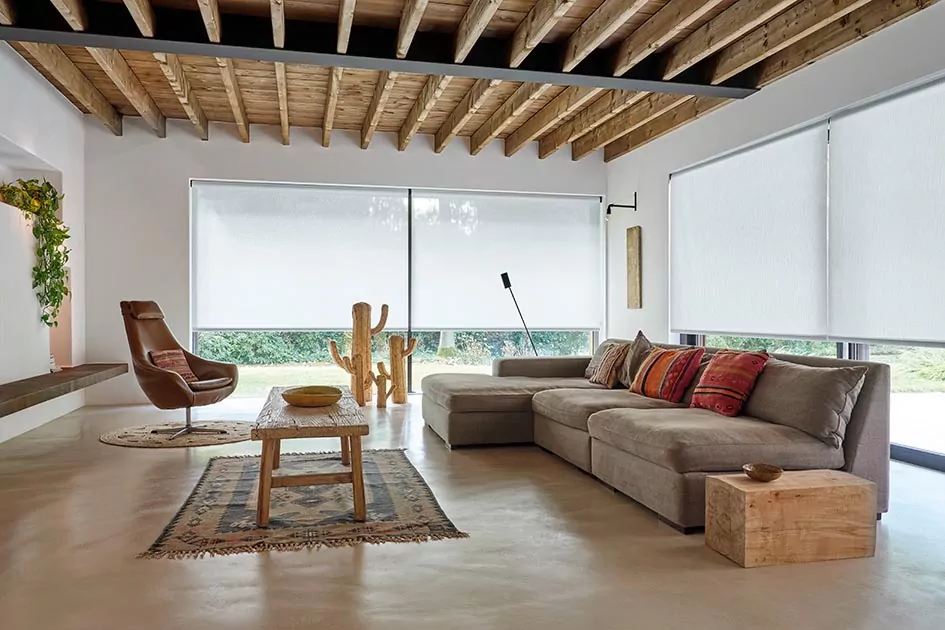
Standard vs Reverse Roll Roller Shade: Differences & How to Choose
If you’ve decided on Roller Shades, sometimes called roller blinds, for your new window treatments, you’ve chosen a truly versatile and practical option. When it comes to how to hang roller shades, you want to get the most out of your shades, both aesthetically and functionally. And one of the first questions that comes to mind for installation is likely: Should roller shades roll front or back? Deciding between a standard (back roll) or reverse roll roller shade (front roll) will depend on several factors including the specific application and your preferences.
Before you dive into the benefits of a standard, sometimes called regular roll, and a reverse roll roller shade, it’s important to first make sure you understand the difference between the two.
WHAT IS REVERSE ROLL ON A ROLLER SHADE?
The terms “reverse roll” and “standard” or “regular roll” refer to how the roller shade is hung, and which side of the roll (front or back) the material rolls off.
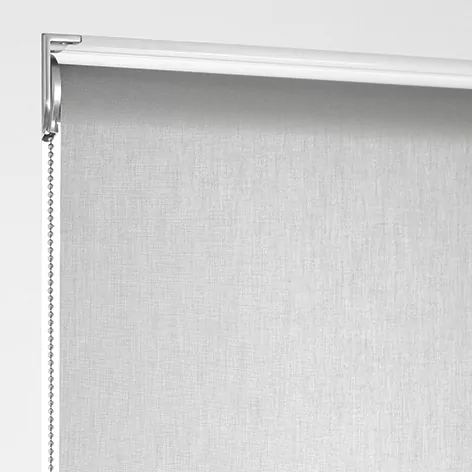
REVERSE ROLL
The material rolls off the front of the tube.

STANDARD OR REGULAR ROLL
The material rolls off the back of the tube.
It’s important to note that both of these terms for how to hang roller shades also apply to Solar Shades, which are essentially roller shades with innovative UV-blocking material.
Both install options will allow the shades to operate in the same way, so choosing between the two boils down to a few other factors, including the specific application and your preferences. Learn more about how to choose between a standard and reverse roll roller shade to suit your exact needs.
HOW TO CHOOSE BETWEEN A STANDARD VS REVERSE ROLL ROLLER SHADE
To choose the right install option for your roller shades, it’s important to first understand the two different types of mounting, inside or outside mount. The type of mount will be a key factor in deciding between a standard or reverse roll roller shade. Once you decide where it’s best to mount your shades, you can then consider the benefits of standard and reverse rolls.
UNDERSTANDING INSIDE VS OUTSIDE MOUNT ROLLER SHADES

Inside mount refers to your blinds or shades being installed inside the window frame, typically mounted from the top of the frame.
Outside mount refers to your blinds or shades being installed outside the window frame, typically mounted on the wall just outside the window trim.
Choosing between these two options will first depend on whether an inside mount is even possible: There needs to be enough space within the window frame for your shades or blinds to be mounted. If both options are possible, then it comes down to a matter of preference.
Benefits of a Reverse Roll Roller Shade
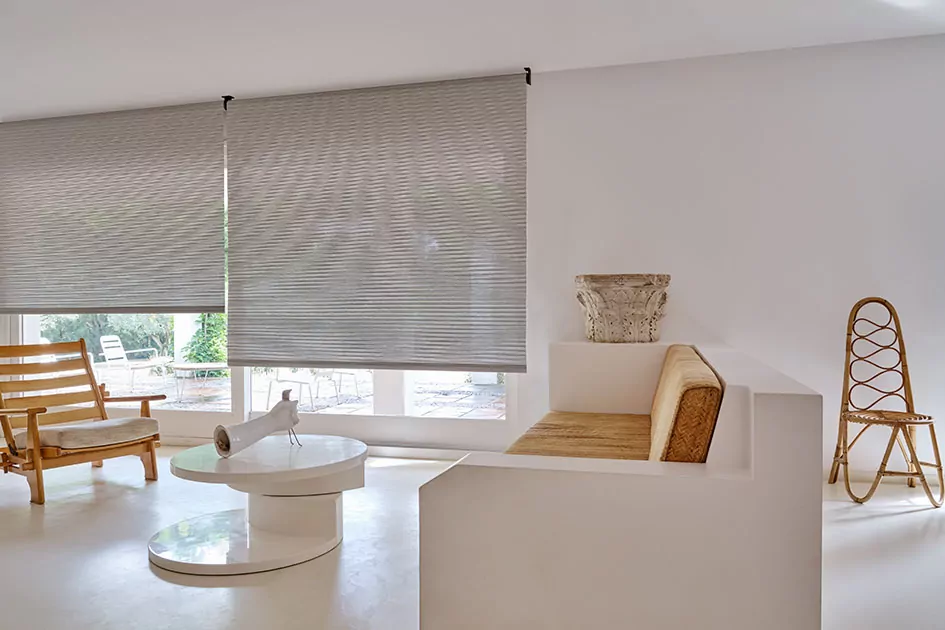
A reverse roll roller shade features material rolling off the front of the tube. Several benefits of a reverse roll include:
- Gives you a clean, minimalist look as the material conceals the roller tube
- Ideal for doors or windows with handles or cranks that stick out, as the shade falls farther from the glass and will clear these obstacles
- Will often clear the window sill when fully extended, allowing you to leave any décor or plants on your sill, whether the shade is opened or closed
When Not to Choose Reverse Roll
While there are many benefits of a reverse roll roller shade, there are some instances where it may not be the best choice:
- If the roller shade sticks out too far, whether inside or outside mounted, it may become an obstacle and make the room feel smaller.
- If you’re trying to achieve a room darkening affect with roller shades alone, a reverse roll causes the material to sit farther from the glass which will allow more light to seep through the sides.
Benefits of a Standard Roll Roller Shade
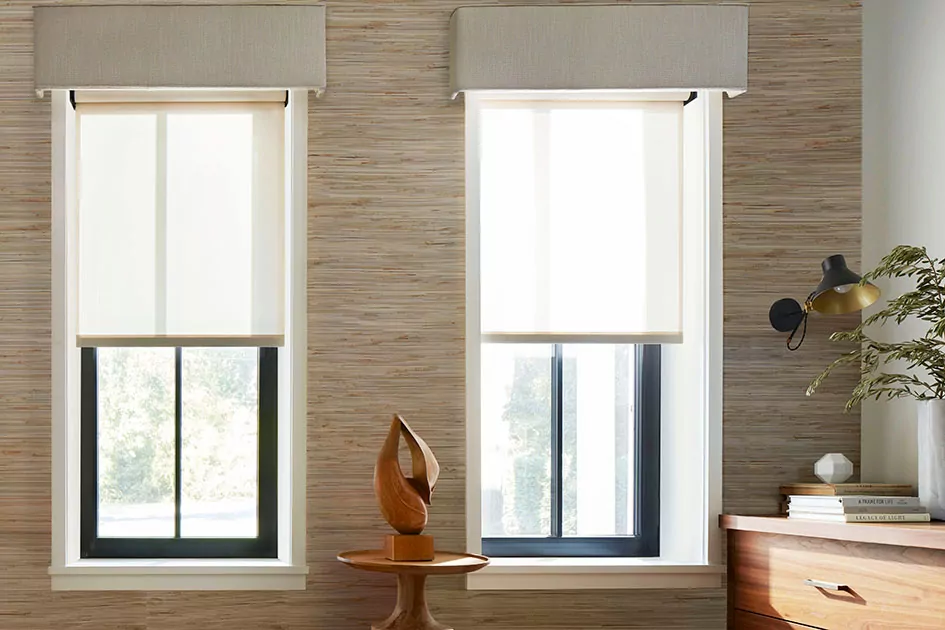
A standard or regular roll roller shade features the material rolling off the back of the tube. Reasons to choose a standard roll include:
- The roll and material sit closer to the window which helps to block more light for a room darkening effect, whether inside or outside mounted
- Won’t protrude from the window, providing a tailored look and feel, and helping to make smaller spaces feel a little bigger
- Allows for easy layering in front of the shade with another shade, blinds or drapery, for greater visual depth and dimension, and better light and privacy control
- Ideal to pair with a valance to cover the tube and provide a more polished, finished look for your windows
When Not to Choose Standard Roll
Situations where a standard roll isn’t ideal include:
- If you have an inside mount on windows with cranks, or if you have an outside mount on doors, a standard roll will cause the material to catch on any cranks or handles.
See Examples of Standard & Reverse Roll Roller Shades
Need more examples of standard and reverse roll roller shades to decide how to hang roller shades in your home? View our gallery featuring a mix of both install options to get a sense for how each works in different types of spaces.
How to Hang Roller Shades
Once you decide between a standard or reverse roll roller shade, you’re ready to learn the basics for how to hang roller shades. Luckily, installing a roller or solar shade is essentially the same whether you choose a standard or reverse roll. The only difference is how you orient the roll when you attach it to the brackets.
To install your roller or solar shades, you’ll need basic tools like a screwdriver, pencil and tape measure. Simply measure and mark where your brackets will be mounted and install the brackets with your screwdriver. When you install the roller shade, make sure to orient it in the right position:
- For a reverse roll, make sure the material is falling off the front of the tube when you install it in the brackets.
- For a standard or regular roll, make sure the material is falling of the back of the tube when you install it in the brackets.
If you find that you install your roller shade the wrong way, switching from a reverse roll roller shade to a standard roll — or vice versa — is easy. Simply detach the tube from the brackets, flip it around to the right orientation, and reinstall it into the brackets.
What’s Next for Your Roller Shade Project
With an understanding of the difference between reverse roll roller shade and a standard or regular roll, you can implement your roller shade project the way you want to. If you’re considering a DIY installation, be sure to closely follow install instructions for how to hang roller shades to ensure your shades fit and work perfectly.
If you’d prefer to have some help with your window treatment project, we can offer you a free quote that includes an estimate for both material and installation costs. Our professional measure and install services take all the guesswork out of your project. You can also call or visit your local showroom to get expert advice for your project from our friendly Design Consultants.
